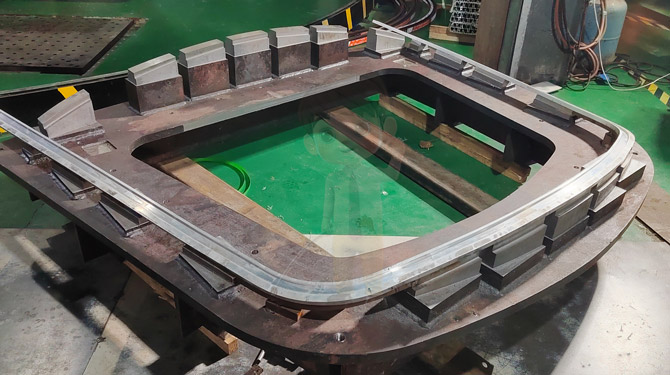The Future of Profile Bending: Leveraging Advanced Technologies for Superior Product Quality
Profile bending, a crucial process in metal fabrication, involves the bending of metal sections into various shapes and profiles to meet specific design requirements across several industries. As technology evolves, the future of profile bending is set to transform significantly, driven by the adoption of advanced technologies that enhance both product quality and production efficiency.
1. The Evolution of Profile Bending Technology
Historically, profile bending relied largely on manual processes and traditional machinery. However, with the advent of computer numerical control (CNC) technology, the landscape has changed dramatically. CNC bending machines offer unparalleled precision, allowing manufacturers to produce complex shapes consistently and efficiently. This evolution has paved the way for more intricate designs, enabling engineers and designers to push the boundaries of creativity while maintaining high standards of quality.
One of the most significant advantages of modern profile bending technology is its ability to achieve high levels of precision and accuracy. CNC machines are equipped with sophisticated software that allows for real-time adjustments, ensuring that every bend is executed to exact specifications. This reduces the likelihood of errors and material waste, leading to cost savings and improved overall quality of the final product.
2. Automation and Robotics in Profile Bending
Automation plays a pivotal role in the future of profile bending. The integration of robotics into the bending process not only speeds up production but also enhances safety and reduces the need for manual labor. Automated systems can handle repetitive tasks, allowing skilled workers to focus on more complex operations and problem-solving.
Benefits of Automation
-Increased Production Speed: Automated bending machines can operate continuously, significantly increasing output.
-Enhanced Safety: Robots can perform dangerous tasks, minimizing the risk of workplace injuries.
-Consistency: Automated systems ensure that each product is manufactured to the same high standard, greatly reducing variability.
3. Smart Manufacturing and Industry 4.0
The rise of Industry 4.0 has brought about a paradigm shift in manufacturing processes, including profile bending. Smart manufacturing involves the integration of IoT (Internet of Things) technologies, enabling machines to communicate and share data in real-time. This connectivity allows for better monitoring and control of the bending process.
By harnessing big data analytics, manufacturers can gain insights into their production processes, identifying areas for improvement and optimizing operations. Predictive maintenance, powered by real-time data, helps to prevent equipment failures before they occur, ensuring uninterrupted production and maintaining product quality.

4. The Role of Advanced Materials
As profile bending technology advances, so too does the development of new materials. The use of lightweight, high-strength materials such as aluminum alloys and composites is becoming increasingly common in profile bending. These materials not only enhance product performance but also contribute to sustainability by reducing overall weight and energy consumption in various applications.
Advanced materials allow for greater customization in design, enabling manufacturers to create tailored solutions that meet specific client requirements. This flexibility is essential in industries such as automotive and aerospace, where performance and weight are critical factors.
5. Sustainable Practices in Profile Bending
Sustainability is a growing concern across all industries, and profile bending is no exception. The future of profile bending will see an increased emphasis on environmentally friendly practices.
-Reducing Waste and Energy Consumption
Advanced technologies enable manufacturers to optimize their processes, minimizing material waste and energy usage. Additionally, recycling materials and employing eco-friendly practices can significantly reduce the environmental impact of profile bending operations.
6. Training and Skill Development
As technology continues to evolve, the need for a skilled workforce becomes more critical. The future of profile bending will rely on technicians and operators who are well-versed in advanced technologies and automated systems.
-Investing in Human Capital
Investing in training and development programs is essential for ensuring that the workforce can adapt to new technologies. Companies that prioritize employee education will not only enhance their operational efficiency but also foster innovation and creativity within their teams.
The future of profile bending is bright, characterized by the integration of advanced technologies that promise to enhance product quality and production efficiency. From CNC machines and robotics to data-driven decision-making and sustainable practices, the advancements in this field are transforming traditional manufacturing paradigms. As companies embrace these innovations and invest in their workforce, they will be well-positioned to meet the evolving demands of the market and deliver superior products that exceed customer expectations. The journey toward a more efficient and quality-focused profile bending industry is just beginning, and the possibilities are limitless.
19
2025-07
Number of visitors:1
HOT NEWS
-
High-precision bending processing service: Automated bending process
2025-12-08
-
High-Accuracy Curve Forming: Achieving Consistent Bends in Aluminum, Steel, and Alloy Materials
2025-11-27
-
Advanced CNC Tube Bending Technology: Achieving Consistent and Reliable Precision in Complex Shapes
2025-11-17
-
From Design to Execution: How Profile Bending Transforms Architectural and Industrial Projects
2025-11-10




 English
English Chinese
Chinese Japan
Japan German
German

 LIST
LIST
